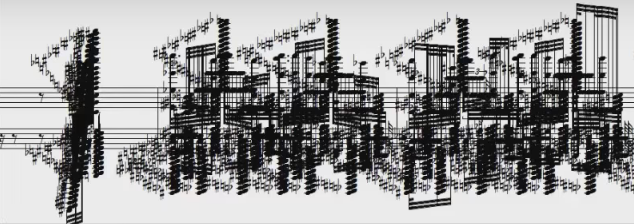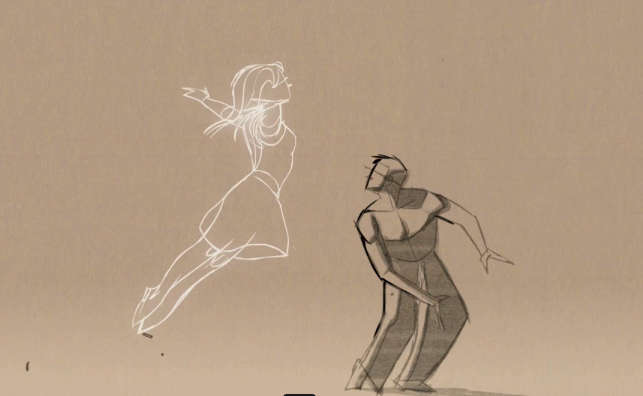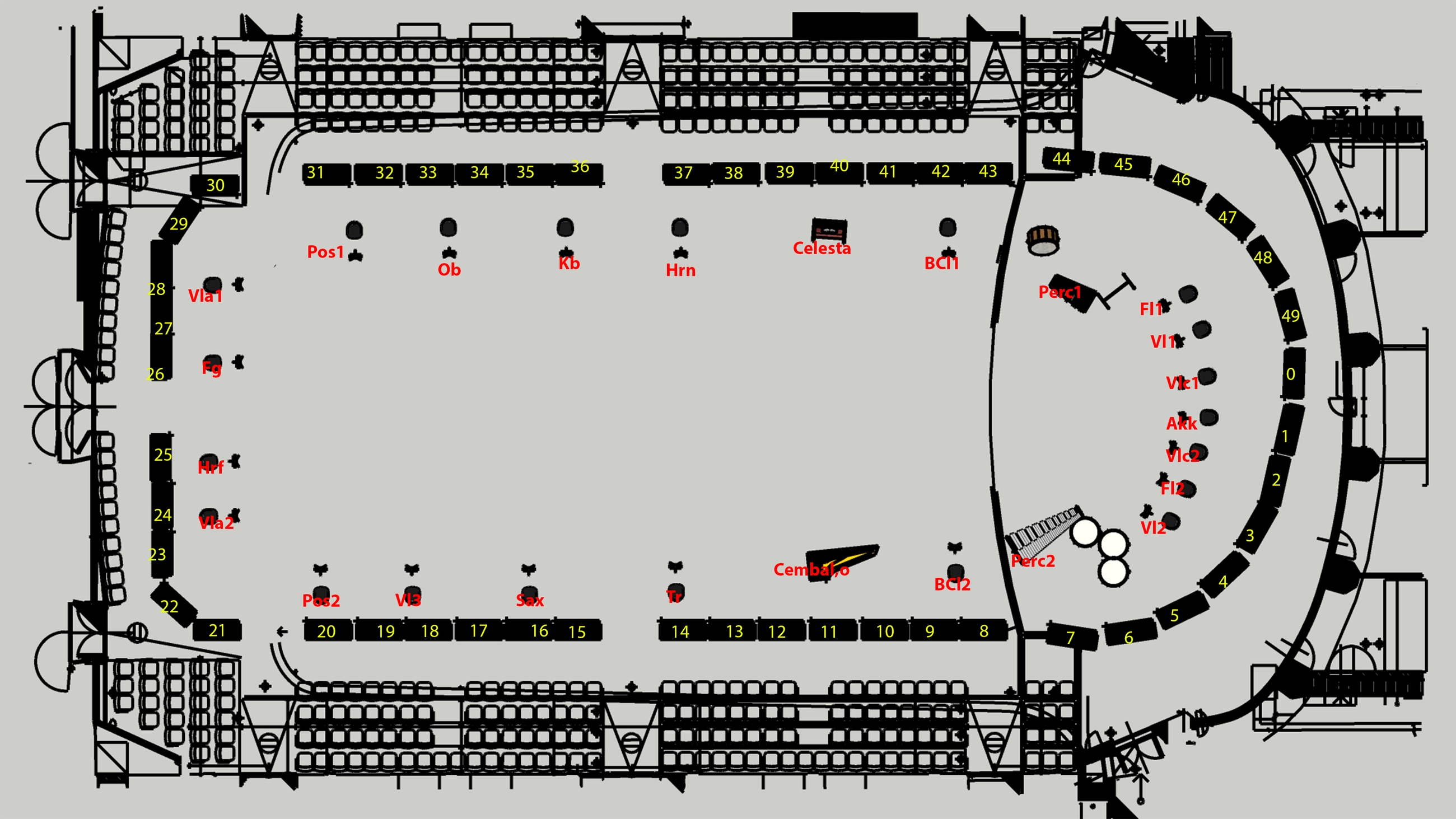created 2024-06-25, & modified, =this.modified
When composing electronically using a sequencer you have elements on a grid which you can place elements of the song. You can hear how the composer and producer have mixed the elements, to provide room or emphasis for the elements.
Occasionally I’d hear a song where all space is so crowded that the it makes it difficult to hear individual elements. This like Bites feels like a limitation of our body’s ability to hear sound (your mp3s will have compression suited for the human ear, like a lossy compression that occurs in jpeg-ification. All it is, is a best attempt).
What I mean is that the artist might have in their head a song that is beyond what a human can hear, or would find pleasant. They’d artistically want 300 layered kicks, or a even simply a constantly colliding bass sequence. This will result in audio mud, but that is separate from the entire space of desires and choices.
A common construction scheme for electronic music is to start off with something simple, and progressively add elements to the song. In mastering you’ll generally cut out unnecessary spaces, leaving room for the elements (highs, lows, mids) to exist in harmony.
“Bonecold - Recka” has a beautiful subdued example of this where it feels like the elements of the track are self assembling, in a weary and forlorn way.
But traditionally a kick has a bouncing bass in the spaces in between, forming a groove. Choosing “groove” here which outside of slang is, ‘a long narrow depression, especially one made to guide motion.’
The analogy is to the groove in a vinyl record — the musicians are so together that it’s like they’re the needle guided by the groove.
Syncopation
With syncopation you’ll find a “number of notes occur on the off-beat, while many rests occur on the beat.”
Trapped song
With music I’ve noticed this phenomenon. An aspect of the experience is so internal, that it can become difficult or impossible to express without the aid of language. What I mean is that I can hum a song, or even recall a popular song but not have the name. In my head I hear it completely.
But it is stuck in me. I can try to communicate it to someone best as I can, but even if they have heard the song before and know the name they won’t be able to get it. Especially this is difficult if the song is completely instrumental as with words you can use these to latch onto the meaning.
It even goes further. Right now, you can think of a bassline and kicks - perhaps something completely original and electronic. For so many that is as far as it can go. That song, no matter how real it feels in your head, is extremely difficult to get out into the world. It might use some imaginary synth etc, or even the notes you just cannot accurately convey.
This is almost scary.
Long pauses
I noticed a few instances of long pauses in a few artists I’ve been listening to, which is the whole reason I am writing this. These are multi-beat pauses.
- Yerai Cortes - https://youtu.be/SS7RI06e5D0?t=63
- Mk Gee - https://youtu.be/L7issvsJvzw?t=65
I need to find more examples, but I am wondering if these have multiple causes/meanings
- they are counter to the rampant aggressiveness and oversaturation of music
- they bring forth an element of surprise and anticipation. There’s unpredictability to the length of the pauses, as I’ve noticed that Yerai will sometimes cut out the break entirely.
- For a listener you kind of drift away to this space where the song exists and it also doesn’t exist
- Emotional emphasis and isolation (“With you… only with you”). The feeling of isolation with the singer is brought out, as you wait.
What I am realizing that is also strange is that in finding the timestamps for these, the gaps feel much longer when listening to the track fully (rather than skipping to the gap itself).
One other thing I noticed from a live Yerai concert. Toward the end of his performance of his seguiriya, he repeats the motif growing more and more silent. I’ve performed this and it can be very intimate, how gentle and soft the playing gets - the fingers barely touching the strings.
What happened in this live concert though was this descent began, and the crowd began to clap and roar before the process could complete. I’d have felt so robbed of that experience had I been there. You can tell Yerai just cut off the song at that point, as the magic had been lost.
NOTE
I’m also seeing this Gen-Z shake vs Millennial Pause discussion come up. It’s not directly related but possibly worth mentioning. The theory is that Gen Z are so conditioned to rapid content delivery and shorts that even the space of inaction at the start of a recording is too much and they’ll lose interest and move on.
They’ll (often artificially) slam down their recording device as if the thought just occurred to them. Some attribute the millennial pause to growing up with slower to engage recording media.
Maybe these excessive pauses above are a type of counter signal to this, even if they are unaware.
Black MIDI
Black MIDI exists far on the end of this spectrum.

Animation
In “Thought of You” there’s a rest, not in the song but in the dance. It occurs 1 minute and 14 seconds in.

Concert
A group of young classical performers came to my work to perform. I sat in the audience for it. They were immensely talented. While they performed they would act out these emotions which were translated to movements in the music. For me, I was unfortunately unmoved and I wasn’t exactly sure why. I simply watched, appreciated the talent but didn’t feel anything.
What is strange though, is that when I was passing on the stairs I saw them practicing in the space outside of the auditorium. This was about a half an hour prior to the show beginning. The violinist was tucked in a corner, and she played to herself a small portion of a song. As I walked back down the stairs, this is where I felt a sense of something moving me.
Who performs
When I was watching the show I had this thought. I was sat more towards the back of the auditorium and at this vantage point I could see most of the audience in front of the stage. I said to myself that everyone present there was a part of the performance. This is true in many minute ways.
The individual hands or feet of the players might not always be actively touching the instruments. Her hands fret a chord, and the chord operates because of omission of certain fingers touching the strings, just as it works because of fingers touching strings.
But in the same way, say the people in the front row - none of them are actively stopping the performance. They sit in mostly silence and unfretted strings. But strangely I couldn’t shake this idea that they were part of the performance, precisely because they did nothing to stop it. They provided, however minor, a contribution to the musical moment. On the other hand at each moment they could leap onto the stage and make the violin a fiddle and dance like a mad god.
I was trying to construct a performance (almost in a Cage-y way) where the audience disruption was part of ending the song. This isn’t fully capturing the idea, but like what if someone decided to “play the grenade” or some kind of timed explosive. For this performance of sound, the role of the people watching would be immediately recognizing the situation and leaping across that wall (of the stage) to stop the “performance.” Maybe in another way, a person afflicted by music mania, and requiring intervention to stop.
This is the idea I was exploring, which now seems like nonsense. Maybe this reflects more accurately the possibility of performance. I do think that the essence of the music, would also not need to contain all of these exponential ripples of causality elsewhere. The music is that distilled, isolated moment and not commonly intended to include the sound of all of us breathing, or all of us feeling nothing.
It can be still a contributing factor, this communication between audience and performer. I wonder, say I am out with someone I love, and we hear a song about love, our heartbeats race together. Does this affect things? It does. Communication between the audience affects the performance and the song. I’ll watch a children’s song, and my niece thinking “old mcdonald had a farm” is literally the best song ever and suddenly understand it. I can watch someone cry during a song, and have a connection with that.
NOTE
Richard Skelton created this book called “Forms of Things Lost To” which was a copy of the book “And Then Gone” buried in “waterlogged soil in the Scottish borders” for a few months and then exhumed. This wear from the environment, created the book we see. It became part of the process.
During this interment, pages of the book became fused and overwritten.
I feel some overlap with this buried book and the resulting decay and erasure, with the possibility in the performance above.
Organ2/ASLSP
ASLSP stands for “as slow as possible,” which is how the composer meant for it to be played, and this particular day would involve a chord change. The last time ORGAN2/ASLSP had a chord change was in 2022, and this new chord will play until the next change, in August, 2026. There is a change the year after that, and the following year, and so on, until the year 2640. The full performance is meant to last 639 years.
The piece begins with a 17 month rest, which brings up the question of when the song starts? (You’d assume it was the first note). This feels like a deliberate provocation.
Beginning a song with rest.
Here Comes The Boy
Discussion: “Here comes the boy” viral clip, that I’ve only seen outside of tiktok.
The original is fantastic and holds some mind share for me. Then we see the remixification of it, which outside of tiktok has multiple times the views.
This is horrible. Each layer it becomes more obfuscated Zalgo text. Something about the nature of what is going on here, in contrast to the original bothers me enough to surface this message.
Gregor Samsa
And here from Gregor Samsa’s rest album from when post-rock was king.
Post-rock kind of died (amongst other things) from taking this in the opposite direction, chasing that emotional crescendo and loudness rather than the opposite path.
Interesting the silence isn’t uniform in these. Like it’s a commonality between songs, but silence in one song is different than silence in another song by context. In the rest I am almost hallucinating sounds after listening to these gregor samsa tracks on and off, since college.
AI Mix
Rather than morphing whole tracks, a blending that could occur /between/ tracks as an element. Like an [A.I.] crossfade. The application I thought would be interesting to see would be during a DJ set where the boundary between each song was dissolved, a new semi-song would appear between them both characteristic of each.
Every song would have a new possible song, a child of the unique parents.
11,000 strings
I noticed that this performance was playing locally.
It started with a dream: 50 pianos as one instrument. Georg Friedrich Haas has created a unique sound experience that is coming over us like a force of nature from the depths of the universe.
It’s like clouds of sound traveling through the concert hall.

